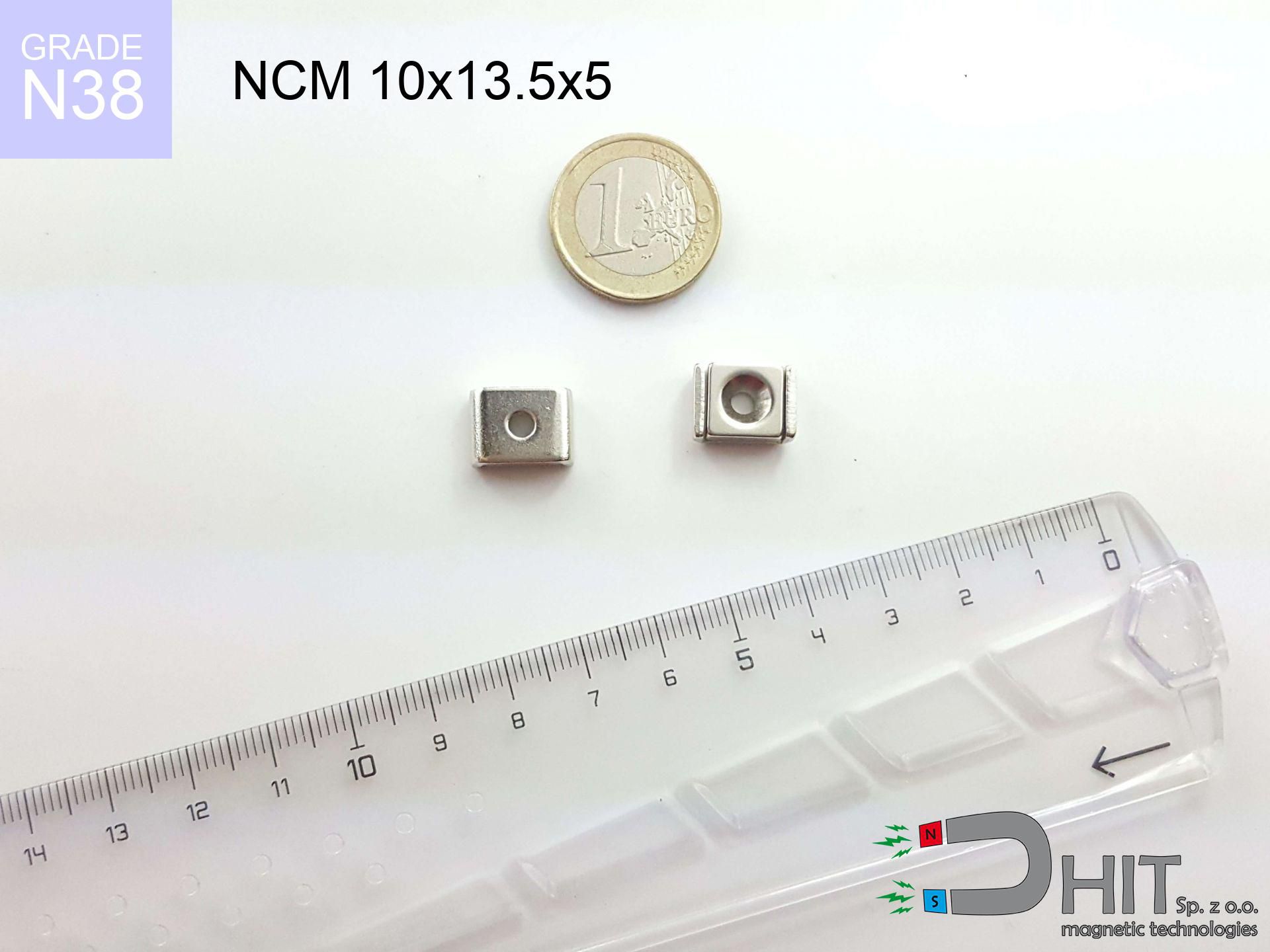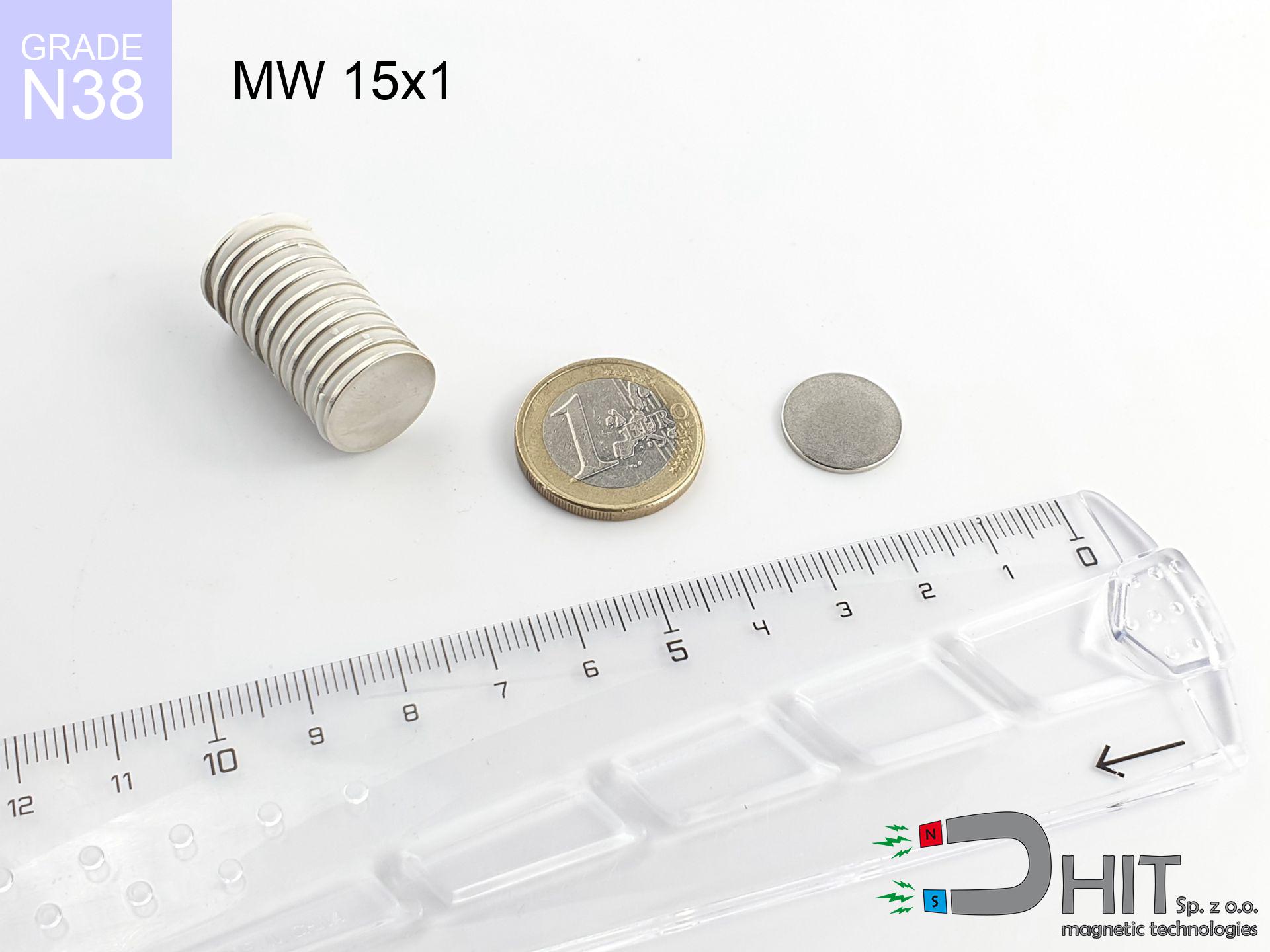MW 16x9 / N38 - cylindrical magnet
cylindrical magnet
Catalog no 010035
GTIN: 5906301810346
Diameter Ø [±0,1 mm]
16 mm
Height [±0,1 mm]
9 mm
Weight
13.57 g
Magnetization Direction
↑ axial
Load capacity
7.96 kg / 78.06 N
Magnetic Induction
463.05 mT
Coating
[NiCuNi] nickel
7.36 ZŁ with VAT / pcs + price for transport
5.98 ZŁ net + 23% VAT / pcs
bulk discounts:
Need more?Want to talk magnets?
Pick up the phone and ask
+48 888 99 98 98
if you prefer send us a note using
contact form
the contact section.
Weight and structure of a neodymium magnet can be analyzed with our
power calculator.
Same-day processing for orders placed before 14:00.
MW 16x9 / N38 - cylindrical magnet
Magnetic properties of material N38
Physical properties of NdFeB
Shopping tips
Moreover, although neodymium is a component of the strongest magnets, they are susceptible to corrosion in humid environments. Therefore, they are coated with a thin layer of silver to protect them from corrosion. Interestingly that NdFeB neodymium magnets are about 13% lighter than SmCo magnets and, despite their power, are brittle, which requires care during their handling. For this reason, any mechanical processing should be done before they are magnetized.
In terms of safety, there are several recommendations regarding the use of these magnets. They should not be used in acidic, basic, organic environments or where solvents are present, as well as in water or oil. Additionally, they can distort data on magnetic cards and hard drives, although data deletion using a neodymium magnet is not always certain.
In terms of properties in different environments, neodymium magnets are sensitive to corrosion, especially in humid conditions. Therefore, they are often covered with thin coatings, such as silver, to protect them from environmental factors and prolong their durability. Temperatures exceeding 130°C can cause a loss of their magnetic properties, although there are specific types of neodymium magnets that can withstand temperatures up to 230°C.
As for risks, it is important to avoid using neodymium magnets in acidic environments, basic conditions, organic or solvent environments, unless they are insulated. Additionally, their use is not recommended in water, oil, or in an atmosphere containing hydrogen, as they may forfeit their magnetic properties.
Advantages and disadvantages of neodymium magnets NdFeB.
Apart from their notable power, neodymium magnets have these key benefits:
- Their power remains stable, and after around ten years, it drops only by ~1% (theoretically),
- They are highly resistant to demagnetization caused by external magnetic sources,
- Thanks to the shiny finish and silver coating, they have an aesthetic appearance,
- Magnetic induction on the surface of these magnets is notably high,
- These magnets tolerate extreme temperatures, often exceeding 230°C, when properly designed (in relation to profile),
- The ability for accurate shaping and adjustment to specific needs – neodymium magnets can be manufactured in multiple variants of geometries, which enhances their versatility in applications,
- Important function in new technology industries – they are utilized in hard drives, electromechanical systems, clinical machines or even high-tech tools,
- Relatively small size with high magnetic force – neodymium magnets offer strong power in small dimensions, which makes them ideal in small systems
Disadvantages of rare earth magnets:
- They can break when subjected to a heavy impact. If the magnets are exposed to physical collisions, we recommend in a metal holder. The steel housing, in the form of a holder, protects the magnet from cracks and increases its overall durability,
- High temperatures may significantly reduce the magnetic power of neodymium magnets. Typically, above 80°C, they experience permanent weakening in performance (depending on size). To prevent this, we offer heat-resistant magnets marked [AH], capable of working up to 230°C, which makes them perfect for high-temperature use,
- They rust in a moist environment – during outdoor use, we recommend using sealed magnets, such as those made of rubber,
- Limited ability to create threads in the magnet – the use of a external casing is recommended,
- Health risk due to small fragments may arise, in case of ingestion, which is notable in the protection of children. Furthermore, minuscule fragments from these products can hinder health screening after being swallowed,
- In cases of large-volume purchasing, neodymium magnet cost may be a barrier,
Exercise Caution with Neodymium Magnets
Neodymium magnets can demagnetize at high temperatures.
Even though magnets have been found to maintain their efficacy up to temperatures of 80°C or 175°F, it's essential to consider that this threshold may fluctuate depending on the magnet's type, configuration, and intended usage.
Neodymium magnets are the most powerful magnets ever invented. Their power can shock you.
Familiarize yourself with our information to properly handle these magnets and avoid significant swellings to your body and prevent disruption to the magnets.
The magnet is coated with nickel - be careful if you have an allergy.
Studies clearly indicate a small percentage of people who suffer from metal allergies such as nickel. An allergic reaction often manifests as skin redness and rash. If you have a nickel allergy, try wearing gloves or avoid direct contact with nickel-plated neodymium magnets.
Neodymium magnets are highly delicate, they easily crack as well as can become damaged.
Neodymium magnets are characterized by significant fragility. Neodymium magnets are made of metal and coated with a shiny nickel surface, but they are not as hard as steel. At the moment of connection between the magnets, sharp metal fragments can be dispersed in different directions.
Dust and powder from neodymium magnets are flammable.
Do not attempt to drill into neodymium magnets. Mechanical processing is also not recommended. Once crushed into fine powder or dust, this material becomes highly flammable.
Make sure not to bring neodymium magnets close to the TV, wallet, and computer HDD.
The strong magnetic field generated by neodymium magnets can damage magnetic media such as floppy disks, video tapes, HDDs, credit cards, magnetic ID cards, cassette tapes, etc. devices. They can also destroy videos, televisions, CRT computer monitors. Remember not to place neodymium magnets close to these electronic devices.
Never bring neodymium magnets close to a phone and GPS.
Magnetic fields can interfere with compasses and magnetometers used in aviation and maritime navigation, as well as internal compasses of smartphones and GPS devices. There are neodymium magnets in every smartphone, for example, in the microphone and speakers.
Keep neodymium magnets away from people with pacemakers.
Neodymium magnets generate strong magnetic fields. As a result, they interfere with the operation of a pacemaker. This is because many of these devices are equipped with a function that deactivates the device in a magnetic field.
Magnets will attract to each other, so remember not to allow them to pinch together without control or place your fingers in their path.
If joining of neodymium magnets is not controlled, at that time they may crumble and also crack. You can't approach them to each other. At a distance less than 10 cm you should have them very firmly.
Maintain neodymium magnets far from children.
Not all neodymium magnets are toys, so do not let children play with them. In such a situation, surgery is necessary to remove them. In the worst case scenario, it can result in death.
Safety rules!
So you are aware of why neodymium magnets are so dangerous, read the article titled How dangerous are very strong neodymium magnets?.





![UMP 75x25 [M10x3] GW F200 PLATINIUM Lina / N52 - search holder UMP 75x25 [M10x3] GW F200 PLATINIUM Lina / N52 - search holder](https://cdn3.dhit.pl/graphics/products/ump-75x25-m10x3-gw-f200-platinium-lina-wiz.jpg)
![SM 32x300 [2xM8] / N42 - magnetic separator SM 32x300 [2xM8] / N42 - magnetic separator](https://cdn3.dhit.pl/graphics/products/sm-32x300-2xm8-pel.jpg)


